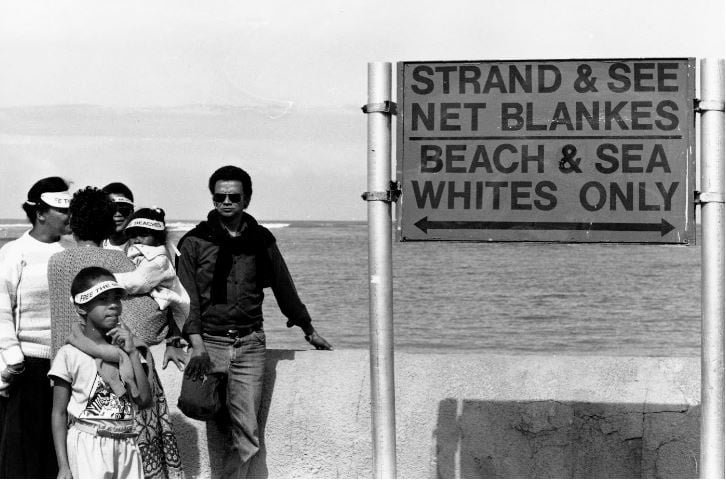The Separate Amenities Act Essay Plus Facts:
Title: The Separate Amenities Act: Segregation and Injustice in South Africa
In this essay, we delve into the historical and social significance of one of the most pernicious pieces of legislation enacted during the apartheid era in South Africa: the Separate Amenities Act of 1953. This law, a blatant embodiment of systemic discrimination, played an instrumental role in perpetuating racial segregation and socio-economic disparities that have left indelible scars on the fabric of South African society. Through an exploration of its legislative details and implementation, societal impact, and eventual repeal, we aim to shed light on its profound and enduring legacy. This exploration provides insights not only into the past but also into the ongoing challenges of addressing the lasting effects of systemic injustice.
The Separate Amenities Act Essay
The Separate Amenities Act, formally known as Act No. 49 of 1953, was a piece of apartheid legislation passed in South Africa under the government of the National Party. It legalized the racial segregation of public amenities, services, and facilities in the country, institutionalizing racial discrimination and perpetuating deep socio-political divisions. The Act symbolized the apartheid regime’s legal foundations, a clear manifestation of its policy of systemic segregation and racial injustice.
The Legislative Details and Implementation of the Separate Amenities Act
The Separate Amenities Act empowered local authorities to provide separate facilities and amenities for different races, thereby legally sanctioning racial segregation in public spaces. Facilities included parks, beaches, buses, libraries, cinemas, and public restrooms. Although the Act purported to provide “equivalent” amenities for all races, in practice, the facilities provided to Black South Africans were often significantly inferior to those provided to their white counterparts, both in quality and quantity. This Act superseded the Reservation of Separate Amenities Act of 1953, which had stipulated that segregated facilities must be substantially equal in quality, a provision that was often ignored even before the 1953 Act.
While the Act did not mandate segregation in all public facilities, it gave municipal bodies the right to impose it if they so wished. This left a considerable amount of discretion in the hands of the local authorities, many of whom took full advantage of the law to further disenfranchise Black and other non-white populations.
Consequences of Separate Amenities Act
The Separate Amenities Act played a central role in formalizing the spatial divisions of apartheid and had a profound impact on South African society. It further entrenched racial segregation and inequality, exacerbating social tensions and resentment. The Act stripped Black South Africans and other racial groups of their basic human rights, dignity, and freedom, instilling a culture of fear and separation.
Beyond the immediate and visible effects of the Act, the deeper social implications were vast. By enforcing segregation and promoting racial hierarchies, the Act served to deepen racial attitudes, shaping perceptions and relationships between different racial groups for generations to come. It contributed significantly to the socio-economic disparities that continue to be a significant challenge in South Africa, long after the abolition of apartheid.
What powers did the Separate Amenities Act give the Government
The Separate Amenities Act was a law enacted in South Africa in 1953, during the apartheid era, which provided the government with significant powers related to racial segregation. The law enabled the government to legally enforce racial segregation in public premises, vehicles, and services.
Premises and Vehicles: The law allowed the government to segregate public premises such as parks, libraries, and theaters, along with public transport like buses and trains. This meant the government could reserve certain public areas and transportation solely for the use of a particular racial group, most often prioritizing white individuals. Additionally, the law also enabled the government to maintain separate amenities within these spaces, such as restrooms and water fountains.
Services: Beyond premises and transportation, the Separate Amenities Act also authorized the segregation of public services. These services encompassed anything provided by the government or local authorities that were available for public use, such as healthcare facilities, educational institutions, and even beachfronts. Importantly, the Act stipulated that separate amenities did not need to be equal in quality, leading to widespread disparity in the level of service provided to different racial groups, with white communities typically receiving superior resources and services.
The Repeal and Legacy of the Separate Amenities Act
In response to both domestic and international pressure, the Separate Amenities Act was eventually repealed in 1990 by President F.W. de Klerk, as part of the dismantling of apartheid. The move signaled the beginning of the end for the apartheid regime, paving the way for the democratization of South Africa and the establishment of a constitutional order based on equality, non-racialism, and non-sexism.
However, the legacy of the Separate Amenities Act continues to shape South Africa today. The socio-economic inequalities entrenched by the Act, and the apartheid regime more generally, persist in the form of significant disparities in income, education, health, and access to quality public services. Despite significant efforts to redress these inequalities, the enduring impacts of the Act serve as a reminder of the long-lasting effects of systemic racial segregation and discrimination.
The Separate Amenities Act represents one of the many ways in which the apartheid regime systematically disenfranchised and discriminated against non-white South Africans. It serves as a stark reminder of the need for vigilance against racial discrimination and the need for ongoing efforts to promote equality and social justice in societies worldwide.





